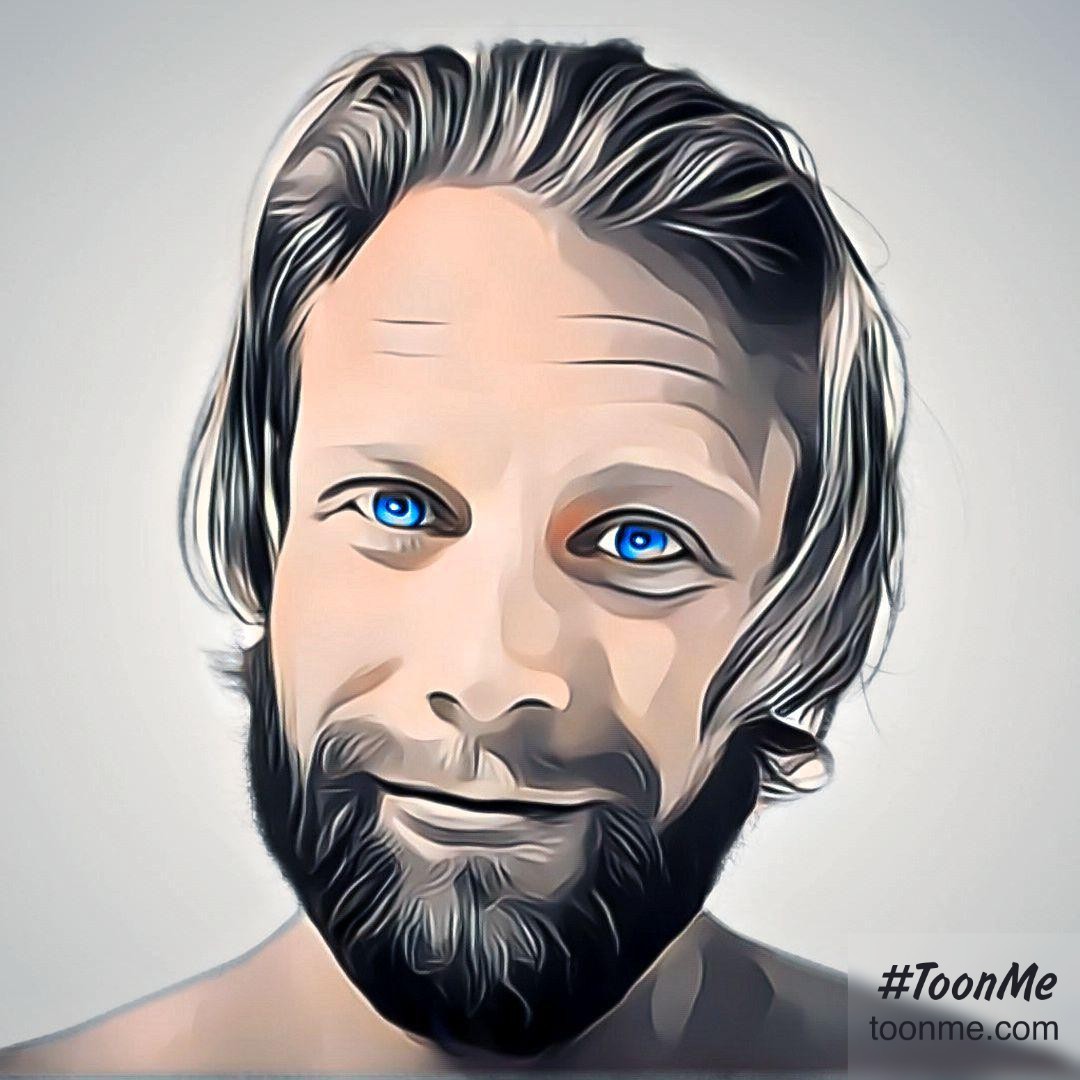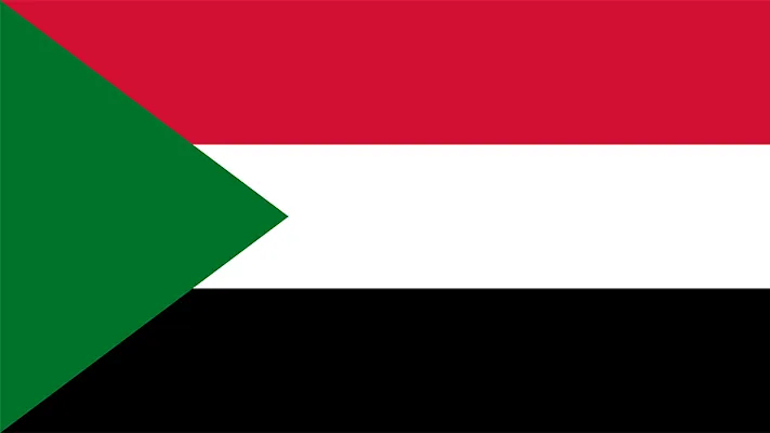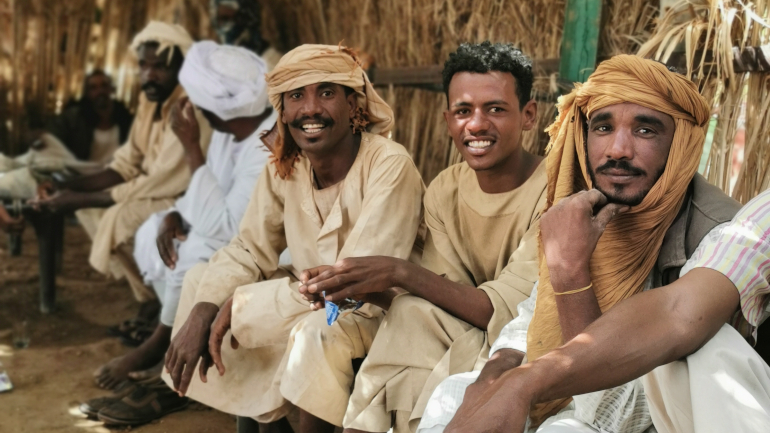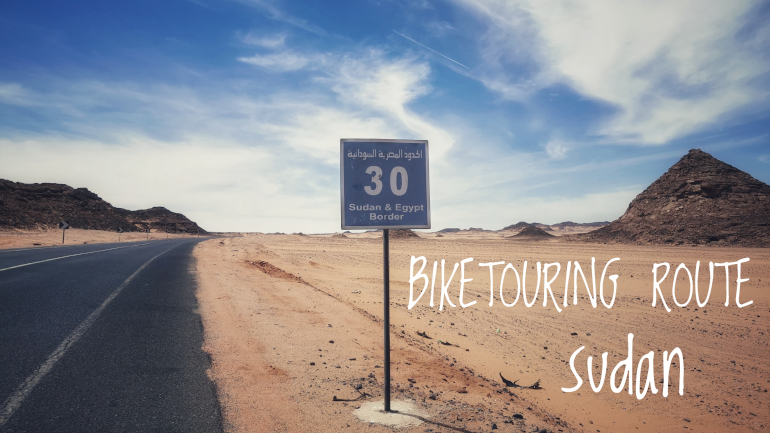Contents [hide]
Intro
ATTENTION: I cycled in Sudan in April 2023 when a war broke out between the national military and rebel forces and I had to stop midways and escape to safety. Before you enter the country, please double check the current situation with your own foreign ministry and ideally with local people on the route you plan to follow.
Visa application
You can see the visa policy for Sudan at Wikipedia. In short you need to get a paper visa from an embassy.
Getting the Sudanese visa proved to be difficult for me while traveling in the Arabian Peninsula. I tried in Dubai and was told they only did visa service for locals and not foreigners. They said my two options were to get a counter visa from a travel agency which of course will only help if you book a tour for minimum +1000 USD or get a visa in my home country. The same story was told in Oman and in Saudi Arabia. I could send my passport to Europe, to an embassy dealing with my passport nationality but I was not very keen on doing that. My last and best chance of getting a Sudanese visa was to take a detour to Egypt. The Sudanese embassy and consulate in Egypt deals with foreigners and getting your visa is easy in either Cairo or Aswan. I got my Sudanese visa in Aswan at this location.
The Sudanese Consulate in Aswan doesn't look like much but you know you've arrived at the correct place when you see an armed guard and the Sudanese flag waving above the entrance.
The process is very straightforward. You get a form to fill with the normal personal details. You need to list a sponsor. A hotel in Sudan where you intend to stay will work. Hand in the filled out form with two passport photos, a photocopy of your passport's main page and a photocopy of the Egyptian entry stamp. Remember to bring the photocopies because there are no photocopy shops nearby. When the form is processed you'll be asked to pay 150 USD. Yes, you read correctly. A staggering amount of 150 USD. They only accept USD. Bring the receipt upstairs where you'll get the visa as a sticker in your passport. The sticker is pretty cool and takes up an entire page.
My visa was valid for two months from date of issue meaning I had to enter Sudan during this period. The duration was two months from the date I crossed the border. I got the visa officer to confirm that I didn't have to leave the country on the last valid date but rather two months after I entered the country. They were a bit confused when I asked this question so you might want to double check with the immigration office in Sudan if you intend to stay longer than the last valid date.
Border crossing from Egypt to Sudan and registration of stay
I used the Wadi Halfa border crossing between Egypt and Sudan.
From the Egypt side you will have to cross Lake Nasser in Abu Simbel getting over to Qustul on the east side. There's a free ferry close to the entrance to the Abu Simbel temple. I couldn't get a confirmed departure schedule but the ferry should sail throughout the day. I showed up in the morning at 7:30 and the ferry left at 9:30. It's a quick crossing. Once on the other side you have some easy 36 km to the actual border crossing.
On the Egyptian side you have to pay an exit fee of 105 EGP and get a paper slip at a window next to the gate. At another window in the same stretch of wall you need another paper at a cost of 15 EGP but I'm not sure about the price as it all was very confusing and I also refused to pay when he couldn't explain what it was for (I still got the paper slip). Take these paper slips and your passport to the gate where they will write down your details in a ledger.
Once on the other side of the gate you'll have to scan your bags and visit an office to get your exit stamp. All of this took one hour.
After you get your Egyptian exit stamp proceed to the next gate which is the beginning of the Sudanese side. Flash your passport at the gate to get the attention of a border patrol officer. He will show you to an office where you need to fill out a basic form with personal details etc. Take this form to another office (they will show you where to go) to pay an entrance fee of 5000 SDG / 8 USD (which comes on top of one of the most expensive visas I've ever gotten). There’s actually also an exit fee you need to pay when leaving the country at the same cost as the entrance fee (I got very tired of all these fees which I really believe they should just include in their visa fee for transparency and simplicity). You can exchange your money outside of the office. I exchanged Egyptian Pounds for Sudanese Pounds. The rate was bad so I only exchanged a small amount. Be sure to have enough cash as you can't pay with your international credit or debit card. Go back to the office where you got the form in the first place to finalize the stamps in your passport. After this you walk through the customs area. Nobody checked my panniers. I just walked straight through. The Sudanese side took 40 minutes to complete.
At the border they will tell you to register at a police station within 3 days. This is also shown with a stamp on top of your visa sticker in your passport. You can do this in Wadi Halfa or in any other major city I was told. I did my registration in Wadi Halfa at a police station with a blue gate on the main street saying Ministry of Interior Affairs … Passport Office. I've marked the location in my itinerary article. The process took me to many offices and people within the police station all having to either check or sign off on a specific detail (don't worry - the friendly people here will walk you through it). You will have to fill a form with personal details and attach one passport photo, a photocopy of your passport's main page and a photocopy of the Sudanese visa. There's a photocopy shop next door to the police station if you need it. Having a stack of passport photos proves to be a good idea. In the end you pay a registration fee of 11050 SDG / 18 USD and get a green sticker in your passport. It seems a bit excessive with all the extra fees on top of the very expensive visa but that's the name of the game if you want to travel in Sudan. Take comfort in the fact that the country probably needs the money more than you.
SIM card and mobile phone internet speed
I picked up my SIM card in Wadi Halfa. In town there's a strip with mobile phone shops where you can buy Zain SIM cards. The mobile phone shops asked for an excessive price for the SIM card alone (5000 SDG / 8 USD) so I opted out of this provider. Besides this there's an MTN store which was recommended by a local (they had system issues while I was there and therefore didn't sell any SIM cards). A third alternative is Sudani which I ended up buying since they had the most attractive package deal with a SIM card for 1500 SDG / 2.5 USD and 10GB data valid for a month for 6500 SDG / 11 USD.
Be aware that mobile phone internet is painfully slow in many places in Sudan. In Wadi Halfa I had H+ connection which hardly let me stream music and open websites. It was mostly only good for sending WhatsApp messages. From Wadi Halfa to Kerma I had no data connection at all. Kerma and Dongola offered data speeds that let me surf the internet. In Karima I was back to only being able to send WhatsApp text messages.
Budget in 2023 prices
The official rate of the Sudanese Pound has fallen drastically in value over the last years. It took a big hit when Sudan's central bank devalued it to align it with the black market in February 2021 setting it to 1 USD = 370 SDG from a previous level of 55 SDG in a bid to stabilize the exchange rate and attract foreign investments. Another big drop in late July 2022 took the Sudanese pound to 565 for a dollar.
Sudan also faces record high inflation with 3 digit inflation rates since 2020. Looking back at price levels in blogs years ago will give a much different picture and make it difficult to estimate a budget. So here is an attempt to give an updated estimate on a travel budget. All prices below are from April 2023 when the Sudanese pound was at 1 USD = 599 SDG.
Selection of items in grocery stores and eateries are limited to smaller towns and villages. Here are some of the common things I bought along my way. Falafel sandwich 300-400 SDG. Foul with bread 600-700 SDG. 800 SDG for Omelette. One fresh round bread from the local bakery 50 SDG. Box cheese 400 SDG. Medium sized MAXtella 1000 SDG. Big bottle of water 400 SDG. 300 SDG for coffee.
Accommodation is surprisingly expensive compared to neighboring Egypt. Private hotel rooms ranged from 5000 SDG (Wawa, Kerma) to 7000 SDG (Wadi Halfa) and 10000 SDG (Karima). You can probably find cheaper accommodation if you spend some time looking but my experience was that the selection of hotels were limited in the smaller towns and villages.
Wild camping
Sudan is an easy place to camp. Locals are perfectly fine with you pitching your tent in the wilderness. And once you leave the river bank of the Nile there are plenty of open and empty desert landscapes to pitch your tent. Just be careful of scorpions. If you choose to camp along the river, ask locals if it's safe for crocodiles. Hyenas was an element of danger in the old days but not so any more as they keep away from the main roads. Don't try to go close to them if you see any.
In towns and villages you can ask to pitch your tent in front of a guesthouse and use their facilities for a reduced fee.
Sudan has its own thing with Caféterias dotted along the main road with regular intervals. You find them almost everywhere. Tin cladded structures are easy to recognize. These are used as rest stops for truck drivers and other people going for something to eat and drink. They often have very basic beds to sleep on. For me, these places were a much needed oasis during my midday break and they were always happy to have me pitch my tent there at night. I spent many nights at the roadside Caféterias and I found them to be a great place to meet locals and a good place to eat dinner and stock up on water. But you need to love your fava beans. Egg and bread is an option in some places.
ATM and money exchange
International credit/debit cards don't work in Sudan. So you can't get cash from ATMs nor pay with your card. I did hear of one place in Khartoum where a traveler was successful in withdrawing cash. Besides that, assume that you need to fund your spendings with cash only.
Bring in cash USD. They have to be series 2009 or newer (that year is just something I picked up from the street and not sure it's at all valid but try to change it for a more recent edition if you got an older one) and ideally be in pristine condition. Worn out paper bills might be an issue.
Recent years of currency instability and high inflation have made the USD a sought after value storage. A big black exchange market exists. But the central bank of Sudan with the aid of the IMF is trying to reign in this parallel market. I actually got a better rate changing my USD to Sudanese Pounds (SDG) at the Bank of Khartoum. Remember to bring your passport to the bank.
Drinking water
The drinking water situation is a bit special in Sudan. Grocery stores in towns and cities together with the roadside Caféterias sell bottled water. The supply is not in abundance and some places they only have smaller bottles.
Far more common is the clay jars which you find everywhere. They are located in small shelters in villages and at the Caféteria to give some examples. I assume this water comes straight from the Nile. The clay jars should somehow clean the water but I would never drink it without filtering first.
So make sure you bring a quality water filtration system before you enter the country. At certain times along some long desolate stretches you might just run out of bottled water and would need to source some from the clay jars if nothing else is available.
Dress code
Sudan is a conservative muslim country in many ways. Follow a dress code where you at least cover shoulders and knees. Ideally you have fully covered arms and legs in loose fitting clothes. This might come very natural as the brutal sun in this Saharan desert is relentless and you would prefer to cover yourself from tip to toe. Also, any sunscreen you might have is better saved as it can be hard to come by.
Road safety
In general there are no hard shoulder on the Sudanese roads. However, in many places the traffic is not busy at all and cars are used to passing slow moving donkey carts. You can escape into a strip of gravel on the main roads if needed. Roads leading into and out of Khartoum are busy and care should be taken (based on advice from locals).
Useful web resources
I found these web links to be useful for planning and during my travels in Sudan:
Best time to visit
From November to March. Temperatures are the deciding factor here and they pick up fast in March and ideally you'll cycle the country in November, December, January or February. April, May and June are some of the hottest and should be avoided.
Depending on your aptitude for handling extreme temperatures I would say October and March are shoulder months at best. I cycled around the country during April. Average midday temperatures hover around 40 degrees. Early morning started at 30. My strategy was to start cycling at 6 in the morning and stop at 12 noon taking rest and shade for the rest of the day in a guesthouse or at a cafeteria. It was a challenge but doable.
biketouring sudan
2023-04-17 | blog
Biketouring blog covering the story of a demanding recovery both physically and mentally from a big crash and how I escaped after being caught in a war between the Rapid Support Forces and the Sudanese Military
biketouring route sudan
2023-04-21 | itinerary
Biketouring route for Sudan with interactive map showing points of interest. Covering the roads from the Egyptian border town of Abu Simbel to Wadi Halfa, Abri and Dongola with a final stop in Karima



